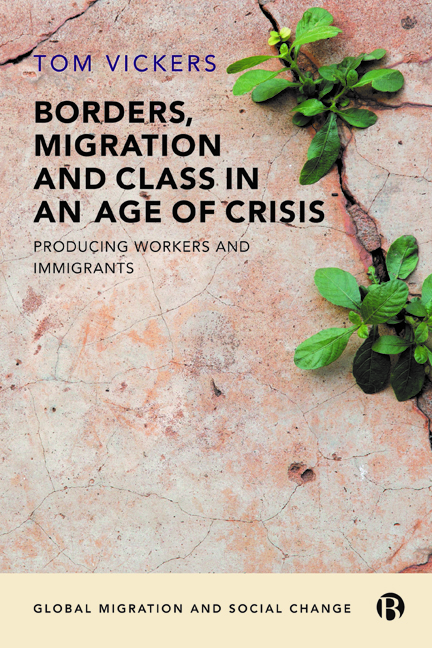Book contents
- Frontmatter
- Dedication
- Global Migration and Social Change
- Contents
- List of Figures and Tables
- Acknowledgements
- Series Preface
- 1 Introduction
- 2 Imperialism, Migration and Class in the 21st Century
- 3 Deconstructing Migrant Crises in Europe
- 4 Deconstructing Welfare Crises
- 5 Mobility Power and Labour Power in the Crisis of Imperialism
- 6 Deconstructing Migrant/Worker Categories in Britain
- 7 Conclusion
- Appendix: Methodology
- References
- Index
Appendix: Methodology
Published online by Cambridge University Press: 30 April 2022
- Frontmatter
- Dedication
- Global Migration and Social Change
- Contents
- List of Figures and Tables
- Acknowledgements
- Series Preface
- 1 Introduction
- 2 Imperialism, Migration and Class in the 21st Century
- 3 Deconstructing Migrant Crises in Europe
- 4 Deconstructing Welfare Crises
- 5 Mobility Power and Labour Power in the Crisis of Imperialism
- 6 Deconstructing Migrant/Worker Categories in Britain
- 7 Conclusion
- Appendix: Methodology
- References
- Index
Summary
Amid the diverse activity that informed the writing of this book, described in Chapter 1, three more bounded areas of empirical research warrant more detailed explanation.
Researching ‘new migrants’ in the North-East England workforce
This project took place during 2013–16 and adopted a mixed-methods approach, drawing on Bloch (2002) and Phillimore and Goodson (2006). It included a survey (n = 402), qualitative interviews with migrants (n = 40) and practitioners (n = 12), and a policy seminar (n = 50).
In the absence of a reliable sampling frame for the target population, the survey used non-probability methods, similar to Bloch and McKay (2016), with purposive sampling from multiple starting points. Sampling aimed for diversity by locality, gender, age, immigration status and country of origin. Responses were collected face-to-face via support agencies, drop-ins, migrant community organisations, ESOL classes, workplaces and a small number online. The sample composition is shown in Table A1.
A total of 40 migrants participated in qualitative interviews, 27 of whom volunteered following completion of the survey and 13 of whom were recruited via referrals. The sample composition is shown in Table A2. Six of the 40 interviews used an interpreter, and a second translator checked these transcripts for accuracy.
A total of 12 voluntary and statutory sector practitioners were recruited through a snowball approach, aiming for diversity in sector and migrant user groups. They included representatives of migrant organisations, voluntary and statutory service providers, a trade union, and an employers’ association.
SPSS software was used to produce descriptive statistics from survey data. Thematic coding of interview transcripts used Nvivo software. Biographical summaries were also produced for each of the 40 migrants interviewed and this informed consideration of how different themes interacted within individuals’ lives (for further details, see Clayton and Vickers, 2017).
Analysing hegemonic discourse via media products
Key characteristics of the television documentaries discussed in Chapter 6 are shown in Table A3.
The documentaries were analysed thematically using the transcription of spoken words, images and sounds, combined with repeat viewing at various speeds. Corner (1996: 11) notes the importance of analysing documentaries in the context of their wider ‘political, economic and social orders, within different landscapes of public knowledge’.
- Type
- Chapter
- Information
- Borders, Migration and Class in an Age of CrisisProducing Workers and Immigrants, pp. 193 - 198Publisher: Bristol University PressPrint publication year: 2019



